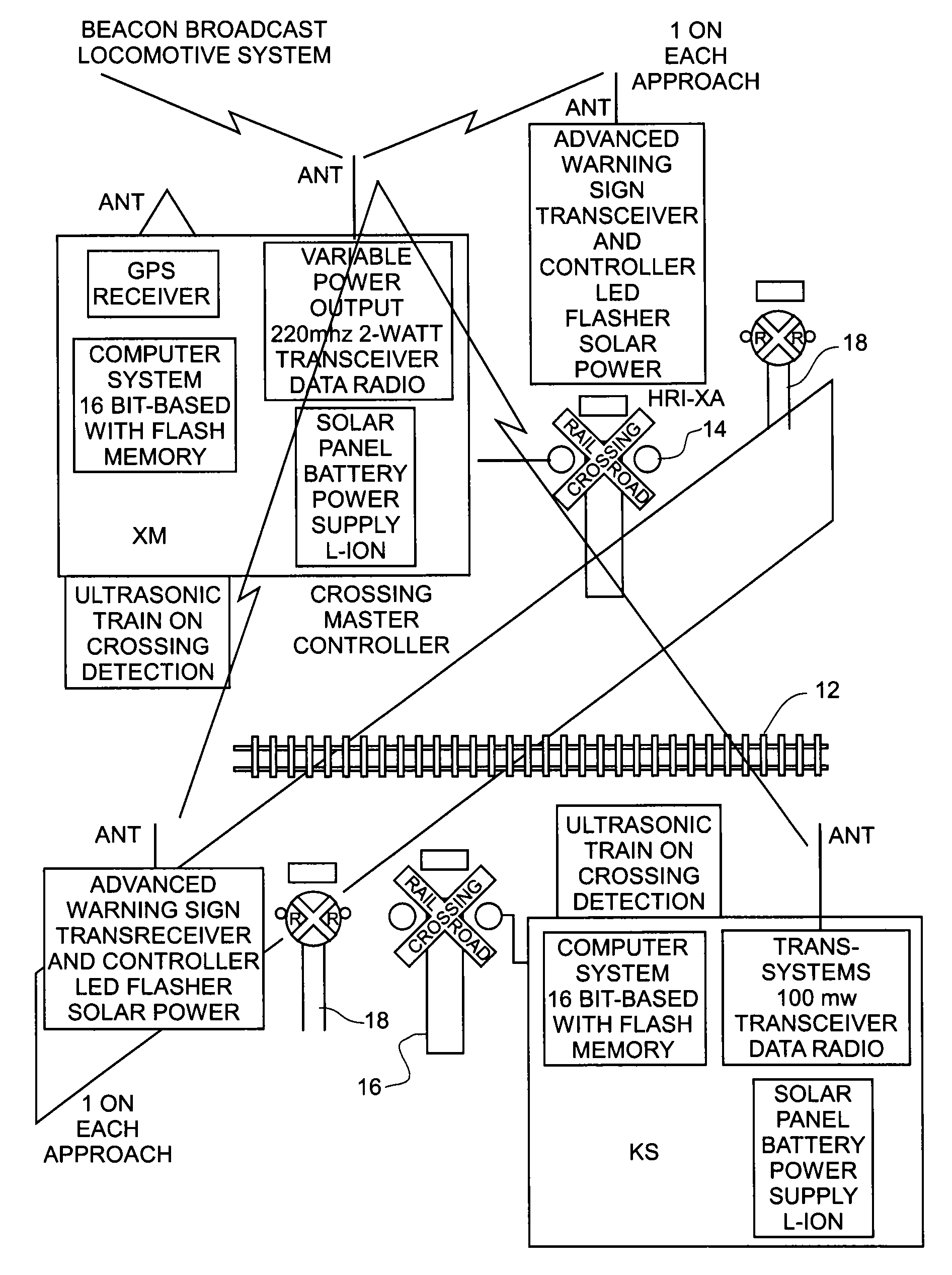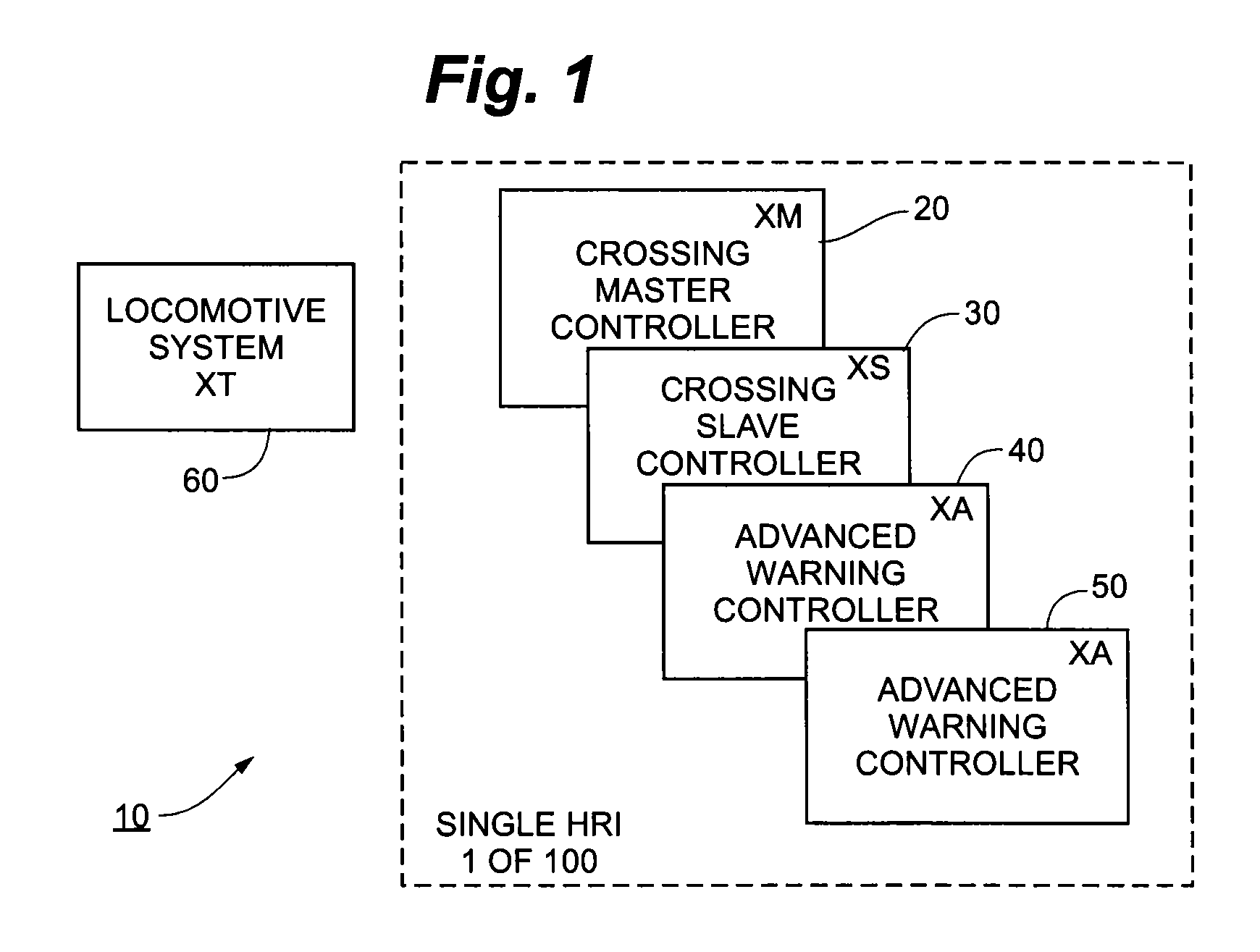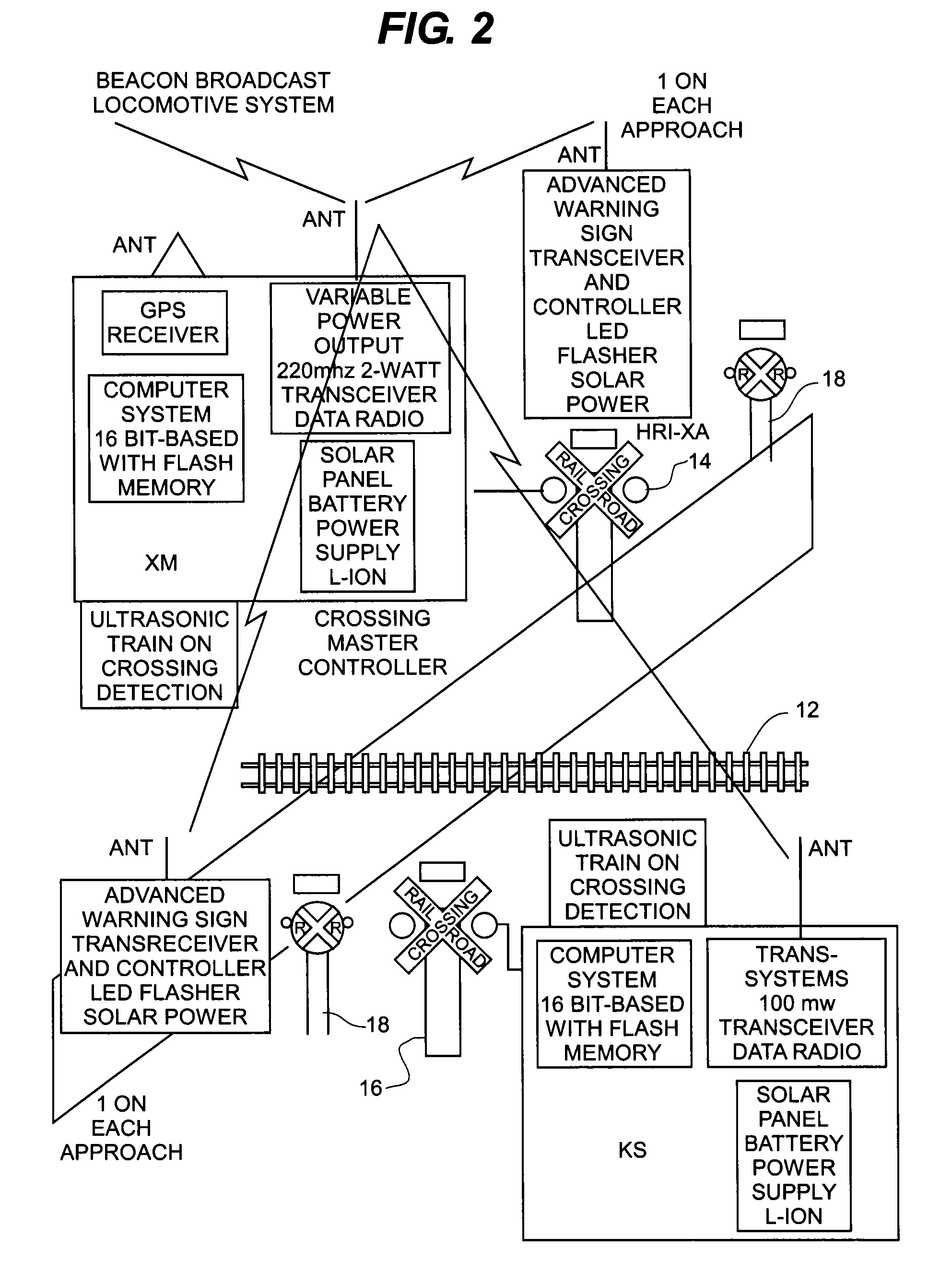Autonomous vehicle railroad crossing warning system
a warning system and autonomous vehicle technology, applied in the field of can solve the problems of limiting the use of such warning systems to urban areas and other high-volume traffic crossings, requiring significant installation effort, and the most existing vehicle collision/crossing warning systems are relatively expensive, etc., to achieve simple, inexpensive and decentralized installation, operation and maintenance, and reduce power consumption. the effect of the receiver
- Summary
- Abstract
- Description
- Claims
- Application Information
AI Technical Summary
Benefits of technology
Problems solved by technology
Method used
Image
Examples
example 1
[0116]A locomotive is just passing time and heading down the track-nothing is around and it is in beacon slot 1. At time T0 it will use the wake up followed by Arbitration slot A1. It will next randomly pick a sub slot of A1.a-A1.c and listen to all 27 remaining arbitration slots. It will discover that it is the only locomotive around and thus stay in beacon slot #1. In the Beacon #1 Header the locomotive will transmit command 0.times.00 and its ID. This is a Beacon only transmission. This would leave the token open for the next locomotive or intersection to use. The token is grabbed by whoever takes it first. In the Beacon #1 Data block it will transmit position, heading and speed. The locomotive is always listening when it is not transmitting so it will just listen until it either arbitrates with another train or it is replied to from an intersection.
example 2
[0117]A single locomotive has approached a single intersection and now receives an acknowledgement. This assumes the Master is functional. All the same as above just a simple beacon. The intersection has been programmed and arbitrated. The system is fully set up for position, housekeeping and acknowledge. We look at the Beacon and see if it is time to respond or not. If not we sit and watch the locomotive approach and verify proper vectors and so on. When the Locomotive is 45±1 seconds it is time to act as follows. In time slot T3 the MASTER will transmit control command 0x02-Turn On-with 10-13 seconds countdown to the controllers in the same time slot. In the SLAVE and advanced warning slots for this crossing we receive back 0x01-Status Reply xxxxxxxx. The MASTER looks at the replies to verify everyone is working and received the turn on command. If the MASTER sees an error it can retransmit the turn on command a second time and watch the replies. This can be done 3 times to ensure...
example 3
[0118]A single locomotive has approached a single intersection and now receives and acknowledge. This assumes the Master functions but the SLAVE or advanced controller failed. The intersection has been programmed and arbitrated and is fully set up for position, housekeeping and acknowledge. A look at the beacon determines if it is time to respond or not. If not we wait and watch the locomotive approach and verify proper vectors and so on. When the Locomotive is 45±1 seconds it is time to act as follows. In time slot T3 the MASTER will transmit control command 0x02-Turn On-with 10-13 seconds countdown to the controllers in the same time slot. In the SLAVE and advanced controller slots for this crossing we receive back 0x01-Status Reply xxxxxxxx. The MASTER looks at the replies to verify everyone is working and received the turn on command. The MASTER will immediately know there is and error and a unit is nonfunctional. The MASTER can retransmit the turn on command a second time and w...
PUM
 Login to View More
Login to View More Abstract
Description
Claims
Application Information
 Login to View More
Login to View More - R&D
- Intellectual Property
- Life Sciences
- Materials
- Tech Scout
- Unparalleled Data Quality
- Higher Quality Content
- 60% Fewer Hallucinations
Browse by: Latest US Patents, China's latest patents, Technical Efficacy Thesaurus, Application Domain, Technology Topic, Popular Technical Reports.
© 2025 PatSnap. All rights reserved.Legal|Privacy policy|Modern Slavery Act Transparency Statement|Sitemap|About US| Contact US: help@patsnap.com



